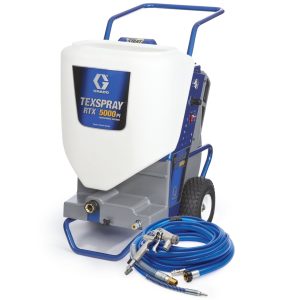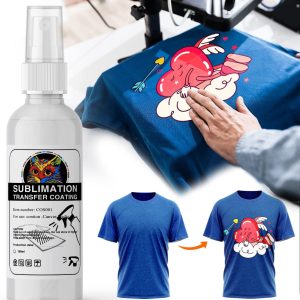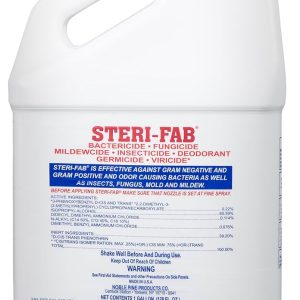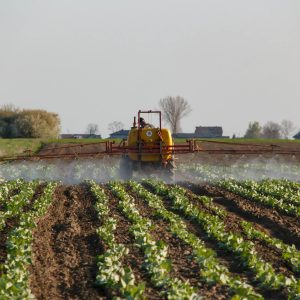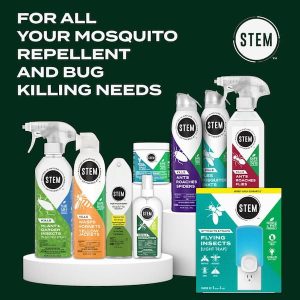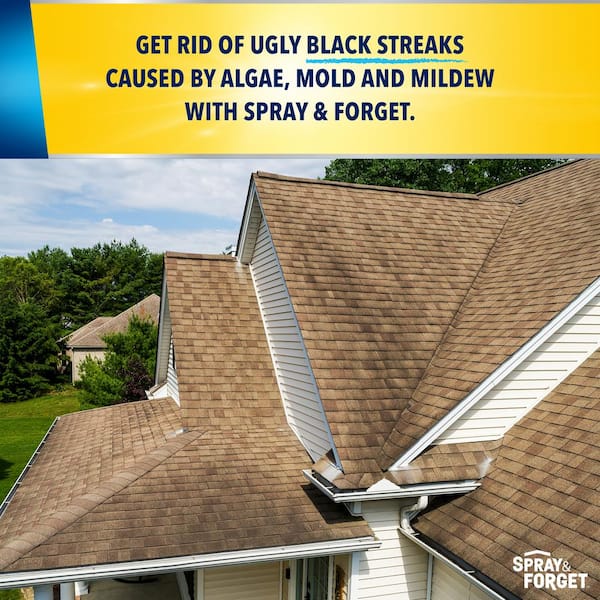
The construction industry has witnessed remarkable innovations in recent years, but few technologies have made as significant an impact as spray on roofing systems. This revolutionary approach to roofing and waterproofing has transformed how building professionals protect structures from the elements. Unlike traditional roofing methods that rely on multiple layers and seams, spray-applied roofing creates a seamless, monolithic membrane that provides superior protection against water infiltration, weather damage, and structural deterioration.
Modern spray on roofing technology encompasses various liquid-applied systems, including polyurethane foam, silicone coatings, and rubber membranes. Spray foam costs $1 to $3 per square foot for DIY applications, though professional installations typically range higher. These systems have gained tremendous popularity in both commercial and residential applications due to their exceptional performance characteristics, cost-effectiveness, and versatility in application across diverse substrate types.
What Makes Spray On Roofing Systems Superior?
Spray on roofing systems represent a fundamental shift from conventional roofing approaches. These liquid-applied membranes cure to form a continuous, seamless barrier that eliminates the weak points commonly found in traditional roofing systems. The technology behind these systems involves advanced polymer chemistry that creates flexible yet durable membranes capable of withstanding extreme weather conditions, thermal cycling, and structural movement.
The seamless nature of spray on roofing systems addresses one of the most critical vulnerabilities in conventional roofing: seams and joints. Traditional roofing materials require overlapping sections that must be sealed, creating potential failure points where water can penetrate. Liquid Rubber acts as an adhesive and bonds extremely well to the substrate, curing to form a highly flexible and seamless rubber membrane that prevents water infiltration and stops rusting and corrosion. This seamless characteristic ensures comprehensive protection that extends far beyond what traditional materials can achieve.
The application process itself offers significant advantages over conventional methods. Professional installers can apply spray on roofing systems directly to existing substrates without requiring complete tear-off in many cases. Liquid-applied membranes are an ideal solution for refurbishment or recover projects since they eliminate the need to tear off the existing leaking/failing roofing and waterproofing systems. This capability reduces labor costs, minimizes disruption to building occupants, and eliminates disposal fees associated with removing existing roofing materials.
Key Performance Characteristics
Durability and Longevity: Modern spray-applied systems demonstrate exceptional longevity, with many manufacturers offering warranties spanning 15-20 years. The molecular structure of these materials provides resistance to UV degradation, thermal shock, and chemical exposure.
Thermal Performance: SPF provides the highest R-value (the measure of thermal resistance) of any commercial roofing material and is suitable for use in nearly every type of climate. This superior insulation performance translates to significant energy savings for building owners.
Weather Resistance: The rubber membrane is resistant to punctures, tears, and abrasions, ensuring that your roof remains in good condition for longer periods. These systems maintain their integrity under extreme weather conditions, including high winds, hail, and temperature fluctuations.
Types of Spray On Roofing Systems
The spray on roofing market offers several distinct system types, each engineered for specific applications and performance requirements. Understanding these variations helps building owners and contractors select the most appropriate solution for their specific needs.
Polyurethane Foam Systems
Polyurethane foam represents one of the most versatile spray on roofing technologies available. These systems consist of two-component formulations that react upon mixing to create a rigid, closed-cell foam structure. The foam provides both waterproofing and insulation in a single application, making it particularly attractive for energy-conscious building owners.
The application process involves spraying the liquid components through specialized equipment, where they expand and cure to form a lightweight yet strong membrane. Typical thickness applications range from 1.5 to 3 inches, depending on insulation requirements and substrate conditions. The cured foam exhibits excellent adhesion to various substrates, including concrete, metal, wood, and existing roofing materials.
Performance Benefits:
- Superior insulation properties with R-values exceeding 6 per inch
- Excellent adhesion to diverse substrates
- Self-flashing capabilities around penetrations and complex geometries
- Lightweight compared to traditional roofing systems
- Renewable surface coatings extend system life
Liquid Applied Membranes
Liquid applied membrane systems represent another significant category within spray on roofing technology. These systems typically utilize elastomeric polymers that cure to form flexible, waterproof membranes. Common chemistries include acrylics, silicones, polyurethanes, and hybrid formulations that combine multiple polymer types for enhanced performance.
The application process involves multiple coats applied with specialized spray equipment or rollers, depending on the system design. Base coats provide adhesion and initial waterproofing, while topcoats offer UV protection and enhanced durability. Some systems incorporate reinforcement fabrics at critical areas to provide additional strength and crack bridging capabilities.
System Advantages:
- Exceptional flexibility accommodates structural movement
- Superior UV resistance with specialized topcoat formulations
- Chemical resistance suitable for aggressive environments
- Easy maintenance and recoating capabilities
- Low odor formulations suitable for occupied buildings
Silicone Roof Coatings
Silicone-based spray on roofing systems have gained significant market acceptance due to their exceptional weathering characteristics and ponding water resistance. These systems utilize silicone polymers that maintain their properties across extreme temperature ranges while providing outstanding UV stability.
Henry 887 Tropi-Cool 100% Silicone White Roof Coating offers superior weatherproofing and cooling benefits, designed to withstand extreme conditions and extend roof life. The reflective properties of silicone coatings contribute to energy savings by reducing cooling loads in hot climates.
Performance Features:
- Outstanding ponding water resistance
- Superior UV stability without chalking or degradation
- Excellent flexibility at low temperatures
- Self-cleaning properties reduce maintenance requirements
- Available in various colors for aesthetic considerations
Installation Process and Best Practices
Successful spray on roofing installation requires careful planning, proper surface preparation, and adherence to manufacturer specifications. Professional contractors follow established protocols to ensure optimal system performance and longevity.
Surface Preparation Requirements
Proper surface preparation forms the foundation of any successful spray on roofing installation. The existing substrate must be thoroughly cleaned, dried, and assessed for structural integrity. Any loose materials, contaminants, or deteriorated sections require removal or repair before system application.
Critical Preparation Steps:
- Structural Assessment: Evaluate the existing roof structure for load-bearing capacity and identify any areas requiring reinforcement
- Surface Cleaning: Remove all debris, vegetation, loose materials, and chemical contaminants that could affect adhesion
- Moisture Control: Ensure substrate moisture content meets manufacturer specifications, typically requiring moisture meters for accurate measurement
- Priming: Apply appropriate primer systems to enhance adhesion between the substrate and spray-applied membrane
- Detail Preparation: Install appropriate flashing details and prepare penetrations according to system requirements
Application Techniques and Equipment
Professional spray on roofing installation requires specialized equipment designed to deliver consistent material mixing and application. Modern spray equipment features precise temperature and pressure controls that ensure optimal material properties during application.
The spray wand represents a critical component in the application process, delivering the mixed materials in uniform patterns that ensure consistent thickness and coverage. Professional-grade spray wands incorporate features such as adjustable fan patterns, precise flow control, and ergonomic designs that reduce operator fatigue during extended applications.
Equipment Categories:
- Proportioning Equipment: Delivers precise material ratios essential for proper curing and performance
- Heating Systems: Maintain optimal material temperatures for consistent viscosity and application properties
- Spray Guns and Wands: Provide controlled material delivery with adjustable patterns and flow rates
- Safety Equipment: Includes respiratory protection, protective clothing, and ventilation systems
Quality Control Measures
Successful spray on roofing installations require comprehensive quality control throughout the application process. Professional contractors implement systematic inspection protocols to verify proper thickness, coverage, and curing characteristics.
Inspection Protocols:
- Thickness Measurements: Use wet film gauges during application and dry film gauges after curing to verify specified thickness
- Coverage Verification: Conduct visual inspections to identify any missed areas or inconsistent coverage
- Adhesion Testing: Perform pull-off tests to verify adequate bond strength between membrane and substrate
- Seam Inspection: Examine all seams and overlaps for continuity and proper integration
- Final Documentation: Maintain detailed records of weather conditions, material batch numbers, and application parameters
Cost Analysis and Economic Benefits
Understanding the economics of spray on roofing systems requires analysis of both initial installation costs and long-term performance benefits. While initial costs may exceed some conventional alternatives, the total cost of ownership often favors spray-applied systems due to their superior durability and performance characteristics.
Initial Investment Considerations
A spray foam roof costs roughly $5 – $10 per square foot as of current market conditions, though pricing varies significantly based on project complexity, system type, and regional factors. Spray foam roof insulation costs can vary widely, ranging from $1 to $7 per square foot on average, with the variation reflecting different system types and application requirements.
Cost Variables Include:
- System Type: Polyurethane foam systems typically cost more than elastomeric coatings but provide superior insulation
- Project Size: Larger projects benefit from economies of scale in material procurement and application efficiency
- Substrate Conditions: Extensive preparation requirements or structural repairs increase overall project costs
- Access Complexity: Difficult access or complex geometries may require specialized equipment and additional labor
- Regional Factors: Local labor rates and material availability affect pricing in different markets
Long-Term Economic Benefits
The economic advantages of spray on roofing systems extend far beyond initial installation costs. These systems deliver measurable benefits through reduced energy consumption, extended service life, and minimal maintenance requirements.
Energy Savings: The superior insulation properties of many spray on roofing systems translate to significant energy savings. Buildings with properly installed systems report cooling cost reductions of 20-40% in hot climates, while heating savings in cold climates can reach similar levels.
Maintenance Reduction: The seamless nature of spray-applied membranes eliminates many common maintenance issues associated with conventional roofing systems. Annual maintenance costs typically decrease by 60-80% compared to traditional systems due to the absence of seams, flashings, and mechanical fasteners that require regular attention.
Extended Service Life: Most spray on roofing systems demonstrate service lives exceeding 20 years with proper maintenance. This longevity compares favorably to conventional systems that may require replacement every 10-15 years, providing significant lifecycle cost advantages.
Return on Investment Analysis
Building owners evaluating spray on roofing systems should consider the total return on investment over the system’s expected service life. Professional energy audits can quantify expected savings, while maintenance cost comparisons provide additional economic justification.
ROI Components:
- Energy Savings: Quantifiable through utility bill analysis and energy modeling
- Maintenance Reduction: Historical maintenance costs provide baseline for comparison
- Insurance Benefits: Some insurers offer premium reductions for superior roofing systems
- Property Value Enhancement: Improved building performance may increase property values
- Operational Continuity: Reduced likelihood of weather-related disruptions provides intangible benefits
Environmental Impact and Sustainability
Modern spray on roofing systems contribute significantly to sustainable building practices through multiple mechanisms. These systems support green building initiatives while providing superior performance characteristics that extend building lifecycles and reduce resource consumption.
Energy Efficiency Contributions
The superior thermal properties of spray on roofing systems directly contribute to building energy efficiency. Spray foam insulation is known for its high R-value, which can lead to significant energy savings by reducing heating and cooling costs. This enhanced insulation performance reduces the building’s carbon footprint by decreasing energy consumption required for temperature control.
Environmental Benefits:
- Reduced Energy Consumption: Superior insulation properties decrease heating and cooling loads
- Lower Carbon Emissions: Reduced energy consumption translates to decreased carbon emissions
- Resource Conservation: Extended service life reduces the frequency of material replacement
- Waste Reduction: Ability to apply over existing systems eliminates disposal of functional materials
Sustainable Material Options
Many manufacturers now offer spray on roofing systems formulated with sustainable materials and reduced environmental impact. Bio-based polyurethanes utilize renewable feedstocks, while solvent-free formulations eliminate volatile organic compound emissions during application.
Sustainable Features:
- Bio-Based Components: Utilize renewable materials in system formulations
- Low VOC Formulations: Minimize air quality impacts during and after installation
- Recyclable Components: Some systems incorporate materials that can be recycled at end of service life
- LEED Contributions: Many systems contribute to LEED certification through various credit categories
Commercial Applications and Case Studies
Spray on roofing systems have demonstrated exceptional performance across diverse commercial applications. These systems excel in situations where traditional roofing methods face significant challenges, including complex geometries, occupied buildings, and aggressive environments.
Retail and Office Buildings
Large retail centers and office complexes benefit significantly from spray on roofing technology due to the expansive roof areas and complex mechanical equipment installations. The seamless nature of these systems provides superior protection around numerous roof penetrations while the superior insulation properties contribute to energy cost reduction.
Case Study – Regional Shopping Center: A 450,000 square foot shopping center in Phoenix, Arizona, replaced its failing modified bitumen system with a polyurethane foam spray on roofing system. The installation was completed in sections to maintain normal shopping center operations. Post-installation monitoring showed a 35% reduction in cooling costs and elimination of leak-related maintenance calls. The system has performed without issues for over 12 years since installation.
Manufacturing and Industrial Facilities
Industrial buildings present unique challenges for roofing systems due to chemical exposures, thermal cycling, and structural movement. Spray on roofing systems excel in these environments by providing chemical resistance and flexibility that accommodates building movement.
Performance in Aggressive Environments: Chemical processing facilities, paper mills, and metal fabrication plants have successfully utilized specialized spray on roofing formulations designed for chemical resistance. These installations demonstrate the versatility of spray-applied technology in addressing specific environmental challenges.
Healthcare and Educational Institutions
Hospitals, schools, and universities require roofing systems that minimize disruption during installation while providing long-term reliability. Spray on roofing systems meet these requirements through rapid installation capabilities and superior performance characteristics.
Occupied Building Advantages: The ability to install spray on roofing systems over existing materials without full tear-off makes them ideal for occupied buildings. Low-odor formulations and rapid curing reduce disruption to building occupants while providing immediate weather protection.
Maintenance and Lifecycle Management
Effective maintenance programs ensure spray on roofing systems achieve their expected service life while maintaining peak performance throughout their operational period. Understanding proper maintenance requirements helps building owners maximize their investment in these advanced roofing systems.
Routine Inspection Protocols
Regular inspections form the cornerstone of effective spray on roofing maintenance programs. Professional inspections should occur at least twice annually, with additional inspections following severe weather events. These inspections identify minor issues before they develop into significant problems requiring major repairs.
Inspection Focus Areas:
- Surface Condition: Evaluate membrane integrity, looking for cracks, blisters, or degradation
- Drainage Systems: Ensure proper water flow and clear all drains of debris
- Penetrations: Inspect all roof penetrations for proper sealing and flashing integrity
- Edge Details: Examine perimeter flashings and terminations for proper adhesion and condition
- Equipment Areas: Check areas around mechanical equipment for damage or membrane displacement
Preventive Maintenance Requirements
Spray on roofing systems require minimal maintenance compared to conventional systems, but adherence to manufacturer-recommended programs ensures optimal performance. Most maintenance activities focus on drainage system maintenance and minor repairs to prevent small issues from developing into major problems.
Maintenance Activities:
- Drainage Maintenance: Keep all drains and gutters clear of debris to prevent ponding water
- Surface Cleaning: Remove accumulated debris and vegetation that could retain moisture
- Minor Repairs: Address small punctures or damaged areas immediately to prevent water infiltration
- Coating Renewal: Some systems benefit from periodic recoating to maintain UV protection and appearance
- Equipment Maintenance: Ensure rooftop equipment doesn’t damage the membrane through vibration or foot traffic
Renewal and Restoration Options
One significant advantage of spray on roofing systems lies in their renewal capabilities. When these systems approach the end of their service life, they can often be restored through recoating rather than complete replacement. This capability provides significant cost savings while extending the system’s useful life.
Spraying a roof with Roof Maxx usually costs about 15-30% as much as the price of replacing the roof—but it can extend the lifespan of the shingles you already have by up to 15 years in some cases. This restoration approach applies to various spray on roofing systems through different methodologies.
Industry Standards and Certifications
The spray on roofing industry operates under comprehensive standards that ensure product quality, installation procedures, and performance characteristics. Understanding these standards helps building owners select appropriate systems and qualified contractors for their projects.
Regulatory Compliance
Spray on roofing systems must comply with various building codes and industry standards that govern fire resistance, wind uplift resistance, and environmental performance. The International Building Code (IBC) and International Residential Code (IRC) establish baseline requirements, while specialized standards address specific performance characteristics.
Key Standards Include:
- ASTM Standards: Comprehensive testing protocols for material properties and performance characteristics
- FM Global Standards: Commercial roofing requirements for insurance compliance and loss prevention
- UL Standards: Fire resistance and safety testing requirements for building applications
- SPFA Standards: Spray Polyurethane Foam Alliance technical guidelines for installation and quality control
Contractor Certification Programs
Professional installation of spray on roofing systems requires specialized training and certification. Major manufacturers operate comprehensive training programs that educate contractors on proper installation techniques, safety procedures, and quality control measures.
Certification Benefits:
- Technical Competency: Ensures installers understand proper application techniques
- Safety Training: Emphasizes proper safety procedures for chemical handling and application
- Quality Assurance: Provides quality control standards that ensure consistent installations
- Warranty Compliance: Many manufacturer warranties require certified installer participation
Troubleshooting Common Issues
Even properly installed spray on roofing systems may experience issues that require professional attention. Understanding common problems and their solutions helps building owners address issues promptly and effectively.
Application-Related Problems
Installation defects represent the most common source of spray on roofing system problems. These issues typically result from improper surface preparation, incorrect material mixing, or adverse weather conditions during application.
Common Installation Issues:
- Poor Adhesion: Usually results from inadequate surface preparation or contamination
- Thickness Variations: Inconsistent application techniques or equipment problems
- Curing Problems: Incorrect material ratios or unfavorable weather conditions
- Overspray: Poor application technique or inadequate wind protection
Performance Issues
Long-term performance issues may develop due to building movement, thermal cycling, or exposure to environmental conditions beyond the system’s design parameters. Professional evaluation helps determine appropriate repair strategies.
Performance-Related Problems:
- Membrane Cracking: Building movement or thermal stress exceeding design parameters
- UV Degradation: Coating failure allowing UV exposure to underlying membrane
- Ponding Water: Inadequate drainage or building settlement causing water accumulation
- Chemical Attack: Exposure to chemicals not considered in original system selection
Future Developments and Industry Trends
The spray on roofing industry continues evolving through technological advances in material science, application equipment, and performance monitoring systems. These developments promise enhanced performance, easier application, and greater sustainability.
Advanced Material Technologies
Research and development efforts focus on creating next-generation spray on roofing materials with enhanced properties and reduced environmental impact. Bio-based polymers, self-healing materials, and smart coatings represent emerging technologies that will transform the industry.
Emerging Technologies:
- Self-Healing Polymers: Materials that automatically repair minor damage without human intervention
- Smart Coatings: Systems that change properties in response to environmental conditions
- Bio-Based Materials: Sustainable alternatives derived from renewable resources
- Nanotechnology: Enhanced properties through nanoscale material modifications
Application Technology Advances
Equipment manufacturers continue developing more sophisticated application systems that improve consistency, reduce waste, and enhance safety. Robotic application systems and automated monitoring technologies represent significant advances in installation capabilities.
Equipment Innovations:
- Robotic Application: Automated systems for consistent application on large projects
- Real-Time Monitoring: Systems that monitor material properties during application
- Improved Safety Systems: Enhanced protection for applicators and building occupants
- Precision Control: More accurate material delivery and thickness control
Frequently Asked Questions About Spray On Roofing
What is spray on roofing and how does it work?
Spray on roofing is a liquid-applied roofing system that creates a seamless, waterproof membrane when cured. The system involves spraying liquid polymers onto the roof surface, where they cure to form a flexible, durable membrane that provides superior weather protection compared to traditional roofing materials.
How long does spray on roofing last?
Most spray on roofing systems are designed to last 15-25 years with proper maintenance. The actual service life depends on system type, environmental conditions, and adherence to maintenance recommendations. Many systems can be renewed through recoating rather than complete replacement.
Can spray on roofing be applied over existing roofing materials?
Yes, many spray on roofing systems can be applied directly over existing materials, eliminating the cost and disruption of tear-off. However, the existing substrate must be structurally sound and properly prepared according to manufacturer specifications.
What are the main benefits of spray on roofing systems?
Spray on roofing systems offer numerous advantages including seamless application, superior waterproofing, excellent insulation properties, minimal maintenance requirements, and the ability to accommodate complex geometries and roof penetrations without compromising performance.
Is spray on roofing suitable for residential applications?
While spray on roofing systems are commonly used in commercial applications, they are increasingly being used for residential projects, particularly for flat roofs, additions, and challenging architectural features where traditional materials may not perform adequately.
How much does spray on roofing cost compared to traditional materials?
A spray foam roof costs roughly $5 – $10 per square foot, which may be higher than some traditional materials initially. However, the total cost of ownership is often lower due to superior insulation properties, reduced maintenance requirements, and extended service life.
What maintenance does spray on roofing require?
Spray on roofing systems require minimal maintenance compared to conventional systems. Regular inspections, drainage maintenance, and prompt repair of any damage are the primary requirements. Some systems benefit from periodic recoating to maintain UV protection.
Can spray on roofing systems be repaired if damaged?
Yes, spray on roofing systems can typically be repaired effectively. Minor damage can often be addressed with local repairs using compatible materials, while more extensive damage may require section replacement or system renewal through recoating.
Ready to transform your building with advanced spray on roofing technology? Contact professional roofing contractors experienced in liquid-applied systems to evaluate your project requirements and develop a customized solution that delivers superior performance and long-term value.
Sources:
- Vega Bond Insulation. “Spray On Roofing: Do-It-Yourself Guide 2024.” June 2024.
- American WeatherStar. “Spray Foam Roofing: The Complete Guide.” September 2022.
- West Roofing Systems. “Spray-On Roofing Systems: Costs, Benefits & Installation Guide.” August 2023.
- Liquid Rubber. “Revolutionizing Roof Repairs: The Growing Popularity of Spray on Rubber Roofing.” April 2023.
